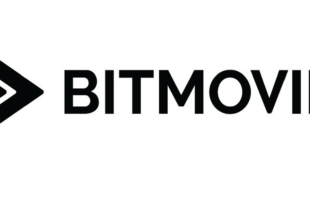OTT players like iFlix, Hooq and Viu are expected to thrive as long as they account for the distinctiveness of each Asia-Pacific market. The three regional players have taken a compelling approach to emerging markets, focusing on and trying to understand the demands and challenges faced by local consumers. As part of this approach, iFlix, Hooq and Viu have established strategic partnerships, offered services at market sensitive prices and developed features appropriate for the available technologies and infrastructures.
Strategic partnerships have played an important role in penetrating most of the emerging markets. In March 2016, iFlix announced its collaboration with Sky plc, which strategically invested $45 million to work with the regional player to identify areas for future collaboration. Another key investor is major Philippines telco PLDT Inc., which currently bundles iFlix for free with DSL and fi ber multiplay plans. Prior to its recent launch in Indonesia (although it’s not yet listed on that market in SNL Kagan’s global OTT database), iFlix sealed a partnership with state-owned telco Telkom. iFlix launched as a joint venture between Catcha Group and Evolution Media Capital.
Hooq, another recent Indonesian market entrant, announced a partnership with Telkom subsidiary Telkomsel in April 2016. Telkomsel customers can access Hooq’s subscription-based service for 49,500 Indonesian rupiah per month, even without a credit card. Hooq achieved similar positioning in the Philippines by partnering with local mobile network Globe Telecom. Hooq is a partnership between Singapore’s Singtel, Sony Corp.’s Sony Pictures Television and Time Warner Inc.’s Warner Bros.
Meanwhile, Viu, backed by Hong Kong based PCCW Ltd., is strengthening its Indonesian market presence through partnerships with Telkomsel, Telkom’s IndiHome Fiber and Samsung Corp. In Malaysia, it has partnered with Telekom Malaysia Berhad. Since March 2016, the telco’s UniFi and Streamyx broadband customers have had Viu access as part of their subscriptions.
In terms of content, Netflix may have an advantage in exclusive original productions, but these Asia- Pacific regional OTT providers have capitalised on getting local fi lm and TV content, while still maintaining international video catalogs. When Hooq launched in Thailand, some of its content partners included GTH, Five Star, TIGA, Walt Disney Co. and DreamWorks Animation SKG Inc. In 2015, the regional player entered a multiyear deal with top South Indian broadcaster Sun TV Network. Hooq has also collaborated with leading Philippines broadcasters GMA 7 and ABS-CBN Corp. Viu’s approach to content differs from that of Netflix, Hooq and iFlix in that it primarily offers Asian and especially South Korean content, including from top Korean public broadcasters SBS, KBS and MBC. Localised versions of Korean-produced content enjoy popularity in a variety of Asian countries. Viu also secures regional and international content through partnerships with distributors and content producers including Primeworks Distribution, Media Prima and Caracol. The OTT service boasts a fast content localisation turnaround time.
Hooq, iFlix and Viu price points are fairly comparable across the emerging Asia-Pacific c markets where the online video streaming services are available. Netfl ix differentiates itself in these markets by offering three subscription plans, as has been the OTT player’s approach globally. Despite the variety in pricing, video quality and simultaneous streaming options, the Asia-Pacifi c regional players’ subscription offerings are still more affordable. However, Viu might be even more appealing to price-sensitive consumers as the only OTT service among the three regional players that, in addition to its subscription offerings, provides free, ad-supported content in select markets, including Hong Kong, Singapore, Malaysia and Indonesia. Despite the importance of enabling content consumption across as many devices as possible, Hooq, iFlix and Viu are not compatible with as wide a variety of devices as Netfl ix. However, all three of these OTT services allow subscribers to download content for offline viewing. Such a feature is appropriate for emerging markets, especially for those characterised by slow or unstable Internet connections. For its registered users, Viu provides a download-to-stream option with a limit of up to about three videos. iFlix currently allows its subscribers to download a maximum of 10 titles (TV episodes and movies) per device at any one time, whereas Hooq allows up to fi ve video downloads at a given time across all supported devices for each Hooq account.









